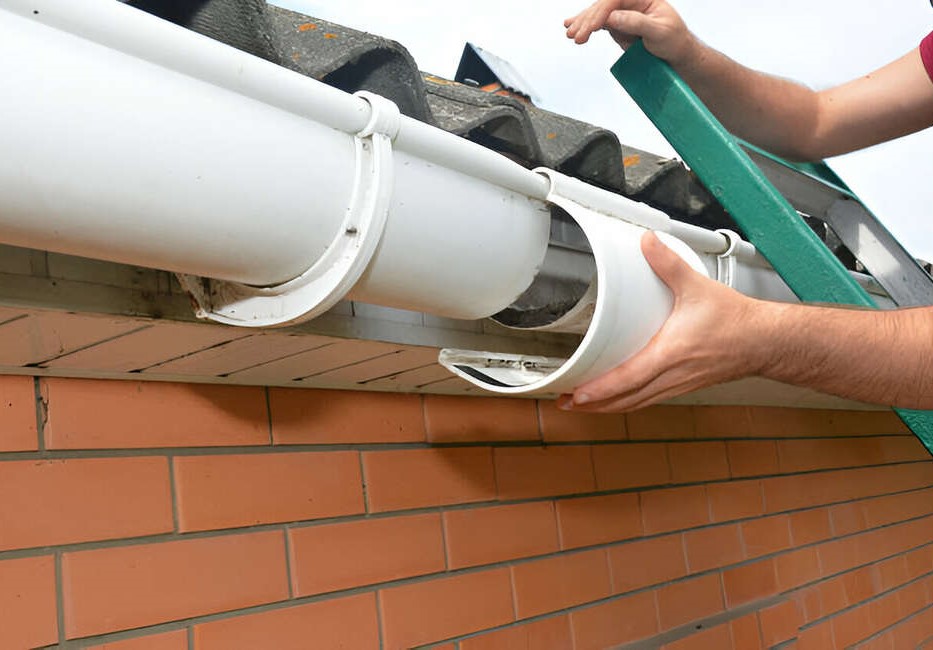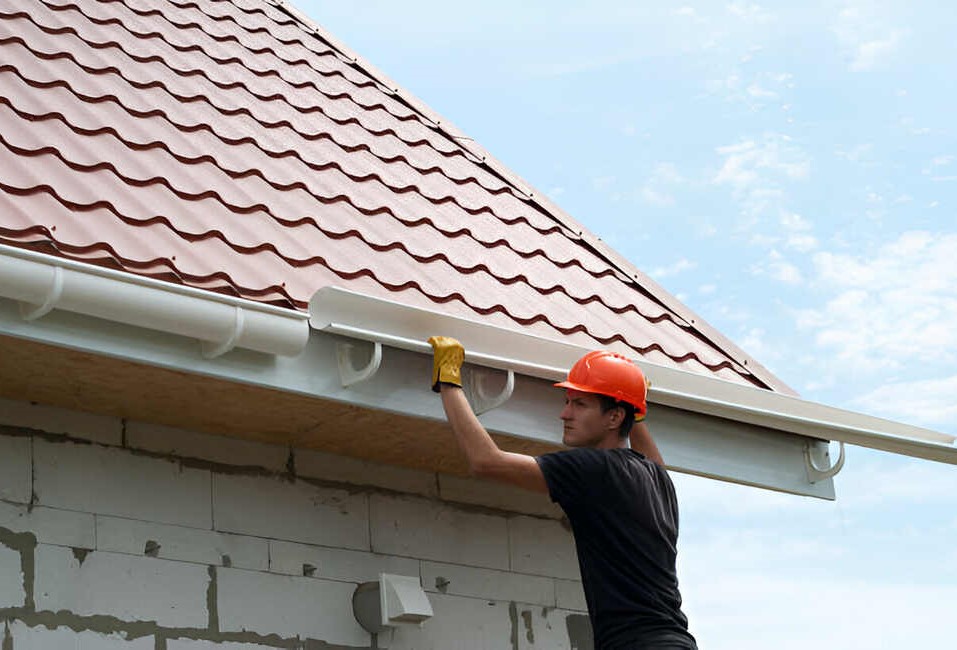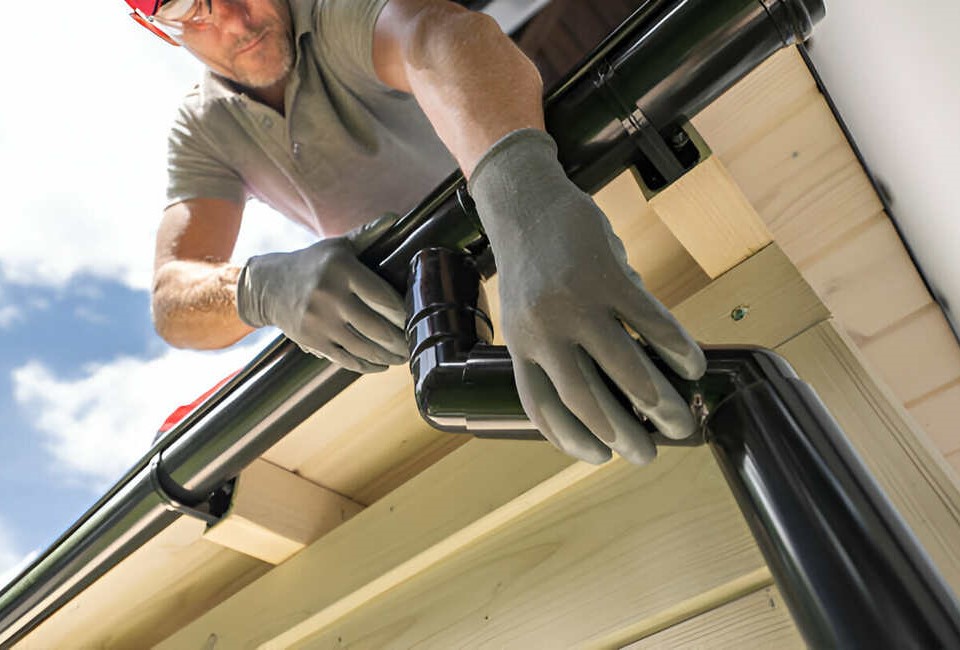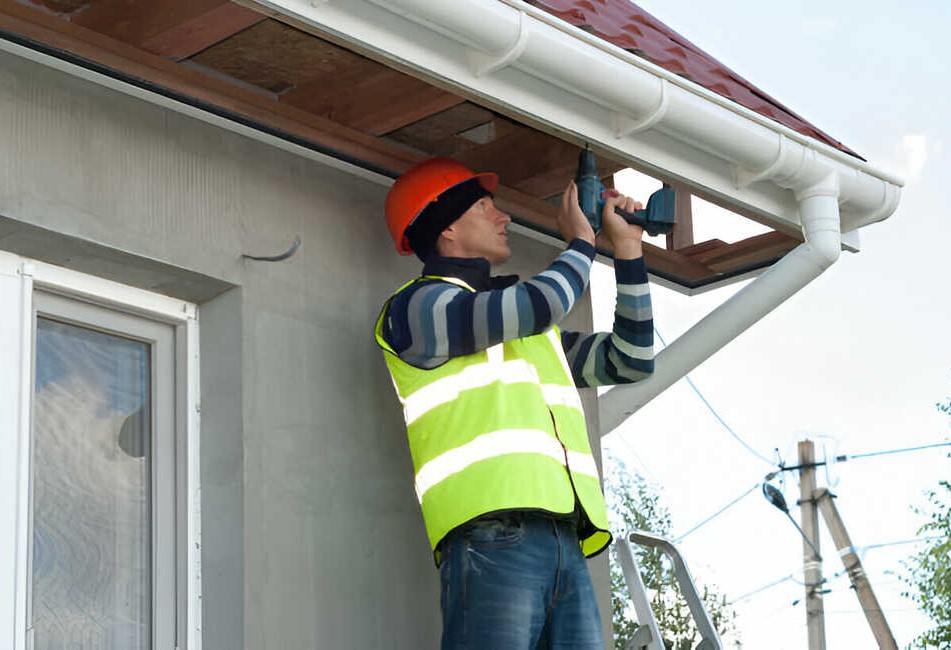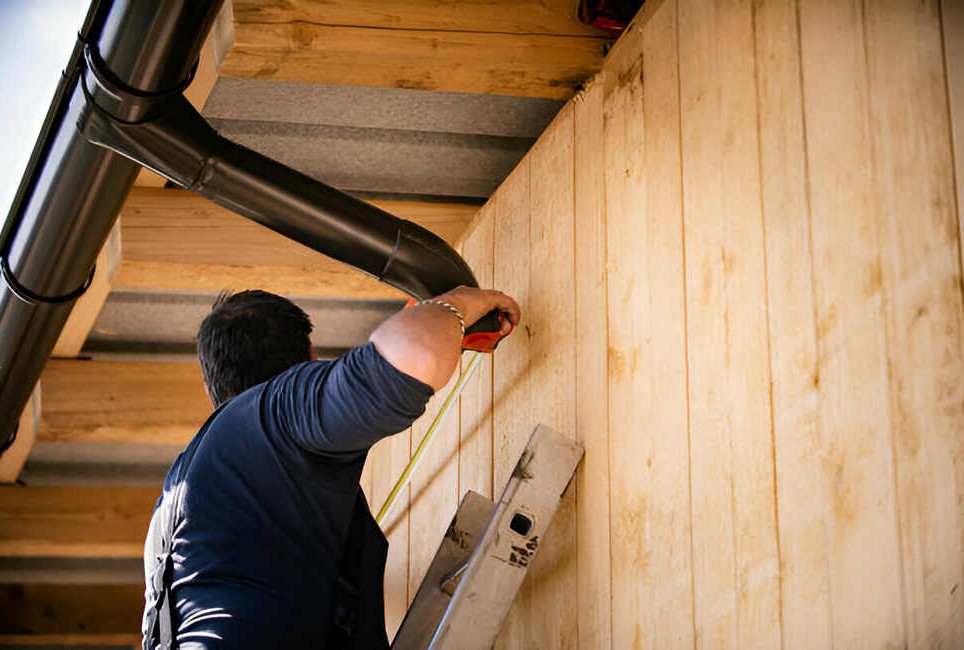The gutters do more than catch rainwater, they’re your home’s first line of defense against water damage. Without the right gutter installation guide, your foundation, siding, landscaping, and even roof could be at risk. So, how do you know which system is right for your home?
In this guide, we’ll walk you through 9 expert tips to help you make the best decision. Whether you’re building a new home or replacing an old system, these insights will help you choose the most efficient, reliable, and long-lasting solution.
Tip 1: Understand Why the Right Gutter System Matters
Choosing the right gutter system is more than just a design choice. It’s about protecting your home. A quality gutter installation system ensures proper water flow away from your house, preventing costly issues like soil erosion, basement flooding, mold growth, and wood rot.
The Role of Gutters in Home Protection
Gutters serve as a channel for directing rainwater safely away from your foundation and structural walls. Without them, rainfall accumulates at the base of your home, soaking the soil and potentially damaging the foundation over time. Over months or years, this can result in settlement, cracks, or even flooding in basements.
Long-Term Cost Savings
Installing a reliable gutter system isn’t just a one-time expense, it’s a long-term investment. When you factor in how much you could spend fixing moisture damage, mold remediation, or replacing siding, the upfront cost of high-quality gutters becomes much more reasonable. Plus, a durable system reduces the need for frequent replacements.
Tip 2: Know Your Gutter System Options
Different homes require different types of home gutter systems based on their design, climate, and surrounding landscape.
Sectional vs. Seamless Gutter Installation
Sectional gutters come in pre-cut lengths and are joined during installation. While they may be more affordable initially, the seams between sections become weak points where leaks can develop. Smooth gutter installation, on the other hand, involves a continuous piece of gutter custom-fit to your home. These systems drastically reduce the chances of leaks and also look more polished, making them ideal for long-term value.
Material Choices Matter
Homeowners have several options when it comes to gutter materials. Aluminum is lightweight and rust-resistant, making it a practical choice. Steel is sturdier but prone to rust if not properly coated. Copper offers unmatched durability and a stylish appearance, though it comes with a higher price tag. Vinyl is inexpensive and easy to install, but tends to become brittle in cold weather. Understanding these material pros and cons helps ensure you choose one that aligns with your budget and climate needs.
Tip 3: Match the System to Your Roof and Climate
Every roof and location is unique. A gutter system for residential homes in a dry climate won’t necessarily work in a region with heavy seasonal rainfall or snow.
Gutter Size and Pitch
The size of your gutter should correspond to your roof’s area and slope. A steeply pitched roof sheds water more rapidly, requiring a gutter system with higher capacity. Larger downspouts may also be necessary to handle the fast flow of water. Undersized gutters can overflow during storms, defeating the system’s purpose and causing damage.
Best Gutters for Heavy Rain
In climates that experience frequent or intense rainfall, choosing gutters with a higher capacity is essential. Look for oversized or K-style gutters, which can handle larger volumes of water. Also, ensure the installation includes multiple downspouts and a proper slope to avoid pooling. Adding gutter guards can prevent debris buildup, ensuring consistent performance in wet seasons.
Tip 4: Choose a Leak-Proof Gutter System
Leaks are the enemy of efficient gutter systems. Even small gaps can lead to big problems over time.
Why Seams Are Problematic
Every joint or seam in a gutter system is a potential weak spot. Over time, weather changes cause expansion and contraction, which can loosen these joints and allow water to seep through. This not only reduces the efficiency of your gutters but can also lead to water damage along your siding or fascia boards.
Benefits of Seamless Gutters
Seamless gutters, crafted from a single piece of material, significantly reduce the risk of leaks. They’re also less likely to clog, since there are no ridges or connectors to trap debris. Aesthetically, they offer a clean, streamlined appearance and come in various materials and finishes to suit your home’s design.
Tip 5: Prioritize Quality Installation
Even the best system will fail if installed improperly. That’s why it’s essential to hire the Best Gutter Installation Company with proven expertise and reviews.
Look for Professional Gutter Cover Installers
A skilled installer ensures the gutter system is sloped correctly, securely fastened, and free from vulnerable weak spots. They’ll also make adjustments based on your roofline and environmental factors. Experienced professional gutter cover installers also know which add-ons and guards work best with your chosen material and design.
Ask About Insurance and Licensing
Always work with contractors who are licensed and insured. This protects you from liability in case of on-site accidents and ensures that the work meets local building codes. Ask for references or a portfolio of past projects to evaluate the quality of their workmanship.
Tip 6: Ensure the System Is Low-Maintenance
Nobody wants to be up on a ladder every few weeks, clearing out leaves. Choosing a low-maintenance system saves time, money, and hassle.
Gutter Guards or Covers
Gutter guards keep out debris like twigs, leaves, and even small animals. This drastically reduces how often you need to clean the system and helps maintain a steady water flow. Some guards are integrated into the gutter design, while others are add-ons. Your installer can help you choose the right type based gutter installation company based on your landscape and seasonal debris load.
Durable Materials and Finishes
Rust-resistant and corrosion-proof materials like coated aluminum or copper extend the lifespan of your gutter system. Additionally, baked-on enamel finishes resist fading and eliminate the need for repainting, which adds to the system’s long-term value.
Tip 7: Plan for Proper Drainage and Downspout Placement
Without the right downspout setup, even the best gutters won’t perform well. Make sure water is routed well away from the home.
Downspout Spacing and Flow
Downspouts should be placed strategically to ensure water is diverted efficiently. Typically, every 20–30 feet of gutter should have its downspout. The downspouts should discharge water at least 5 feet away from the foundation. This helps protect your basement and reduces soil erosion.
Consider French Drains or Extensions
For homes with poor grading, standard downspouts might not be enough. Adding splash blocks, underground French drains, or flexible extensions ensures that water flows far away from the house, preventing moisture buildup near the structure.
Tip 8: Don’t Forget About Seasonal Gutter Maintenance
Even low-maintenance systems need occasional checkups. Knowing when and how to maintain your gutters protects your investment.
Fall and Spring Inspections
These two seasons are ideal for checking your system for clogs, sagging, or damage. Look for any standing water, leaks at joints, or signs of rust. Early detection of these issues can prevent serious damage and extend the life of your gutters.
Winterizing Tips
In colder regions, ice dams and snow buildup can damage gutter systems. Make sure gutters are cleared in late fall, and consider installing heating cables in problematic areas. Attic insulation can also prevent heat loss, reducing snow melt and refreeze cycles on the roof edge.
Tip 9: Ask the Right Questions Before You Commit
Before choosing a gutter system or installer, ask targeted questions to assess quality and compatibility.
Key Questions to Ask
Be prepared with a list of questions that will help you assess the company’s knowledge, quality of materials, and service terms. Ask about their experience with your home’s roof type, what warranty they provide, if they handle disposal of old systems, and whether they offer ongoing maintenance plans. These insights help ensure you’re hiring reliable gutter installation experts who deliver value.
FAQs About Gutter Installation Systems
Q: How long does gutter installation take?
Most residential systems can be installed in a day. Larger or more complex jobs may take slightly longer.
Q: How often should gutters be replaced?
Typically, every 20–30 years, depending on the material and climate conditions.
Q: Are gutter guards worth the investment?
Yes, they greatly reduce clogs, maintenance, and water overflow.
Q: What’s the best gutter for homes in heavy rain areas?
Oversized seamless aluminum gutters with downspout extensions are ideal.
Q: Should I install gutters myself?
Professional installation ensures proper slope, fastening, and water flow, reducing long-term issues.
Why Choose Roofing Inc?
When it comes to protecting your home from water damage, trust Roofing Inc., the Best Gutter Installation Company in the region. With years of experience and a reputation for excellence, we offer customized solutions designed for your specific roof, weather, and budget.
Contact Roofing Inc. today to schedule a free consultation. Let us help you protect your home with the most efficient, durable, and beautiful gutter system available.

